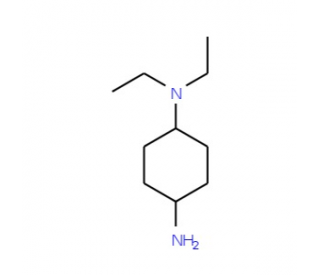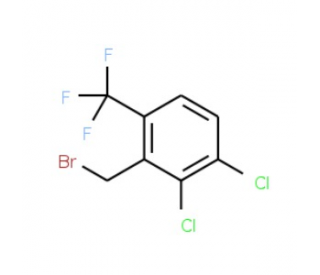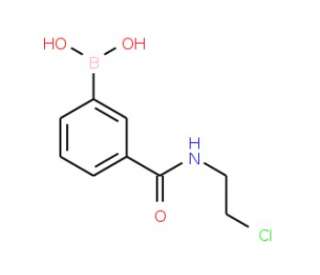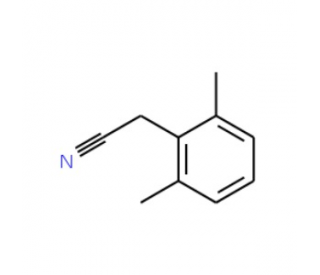详细说明
Purity
>95%, by SDS-PAGE under reducing conditions and visualized by silver stain
Endotoxin Level
<0.01 EU per 1 μg of the protein by the LAL method.
Activity
Measured by its ability to induce adhesion of ATDC5 mouse chondrogenic cells. The ED 50 for this effect is 1-5 μg/mL.
Source
E. coli-derived Met1-Glu183, with a C-terminal 6-His tag
Accession #
N-terminal Sequence
AnalysisMet1
Predicted Molecular Mass
22.2 kDa
SDS-PAGE
23 kDa, reducing conditions
7894-ST |
| |
Formulation Lyophilized from a 0.2 μm filtered solution in PBS and TCEP. | ||
Reconstitution Reconstitute at 250 μg/mL in PBS. | ||
Shipping The product is shipped at ambient temperature. Upon receipt, store it immediately at the temperature recommended below. | ||
Stability & Storage: Use a manual defrost freezer and avoid repeated freeze-thaw cycles.
|
Background: Syntaxin 4
Syntaxin 4 (STX4) is a widely expressed type IV transmembrane protein that is a member of the syntaxin family of t‑SNARE (target‑Soluble NSF [N‑ethylmaleimide‑sensitive factor] Attachment REceptor) membrane fusion proteins (1, 2). For membrane fusion, VAMPs (Vesicle‑Associated Membrane Proteins, also called Synaptotagmins) as v‑SNAREs on donor (vesicle) membranes interact with t‑SNAREs and SNAPs (Soluble NSF Attachment Proteins) on target (cell surface) membranes, with SM (Sec1/Munc18-like) accessory proteins acting as catalysts for fusion (2). Human Syntaxin 4 cDNA encodes 297 amino acids (aa) including basolateral targeting motif for epithelial cells (aa 24‑29), a coiled‑coil domain termed Habc (aa 43‑163), an S‑nitrosylation site which regulates fusion (aa 141), a hinge region, a t‑SNARE domain (aa 200‑262), and a C‑terminal transmembrane domain (aa 276‑296) (1‑4). Within aa 1‑183, human Syntaxin 4 shares 89% aa sequence homology with mouse and rat, and 94‑95% with canine, bovine, equine, porcine, feline and ovine Syntaxin 4. Among its known roles, Syntaxin 4 and SNAP‑23 or SNAP‑25 associate with VAMP‑2 for fusion of GLUT4‑containing vesicles with the plasma membrane in muscle and adipose cells (1, 5). It is required for exocytosis of insulin from pancreatic beta ‑cells (3, 6, 7). With SNAP23 and VAMP‑3, it allows endosome recycling to extend podosomes during macrophage migration (7‑9). It establishes polarization of epithelial cells, specifying basolateral sorting of proteins (4, 10). It mediates postsynaptic activity‑dependent exocytosis in neural cell dendritic spines (11). It is involved in exocytosis of ANP from cardiomyocytes (12). In FAS‑mediated apoptosis, it allows translocation of acid sphingomyelinase to the cell surface (13). Syntaxin 4 binds F‑actin and gelsolin, linking the plasma membrane with, or releasing it from, the actin cytoskeleton (6, 7).
References:
Jagadish, M.N. et al. (1996) Biochem. J. 317:945.
Sudhof, T.C. and J.E. Rothman 2009 Science 323:474.
Wiseman, D.A. et al. (2011) J. Biol. Chem. 286:16344.
Reales, E. et al. (2011) PLoS One 6:e21181.
Vicogne, J. et al. (2006) Proc. Natl. Acad. Sci. USA 103:14761.
Jewell, J.L. et al. (2008) J. Biol. Chem. 283:10716.
Kalwat, M.A. et al. (2012) Mol. Endocrinol. 26:128.
Veale, K.J. et al. (2010) Commun. Integr. Biol. 4:44.
Veale, K.J. et al. (2010) Exp. Cell Res. 317:1817.
Low, S.H. et al. (2006) Mol. Biol. Cell 17:977.
Kennedy, M.J. et al. (2010) Cell 141:524.
Ferlito, M. et al. (2010) J. Mol. Cardiol. 49:791.
Perotta, C. et al. (2010) J. Biol. Chem. 285:40240.
Entrez Gene IDs:
6810 (Human); 20909 (Mouse); 81803 (Rat)
Alternate Names:
NY-REN-31; p35-2; Renal carcinoma antigen NY-REN-31; STX4; STX4Ap35-2; Syntaxin 4; syntaxin 4A (placental); syntaxin-4











 粤公网安备44196802000105号
粤公网安备44196802000105号